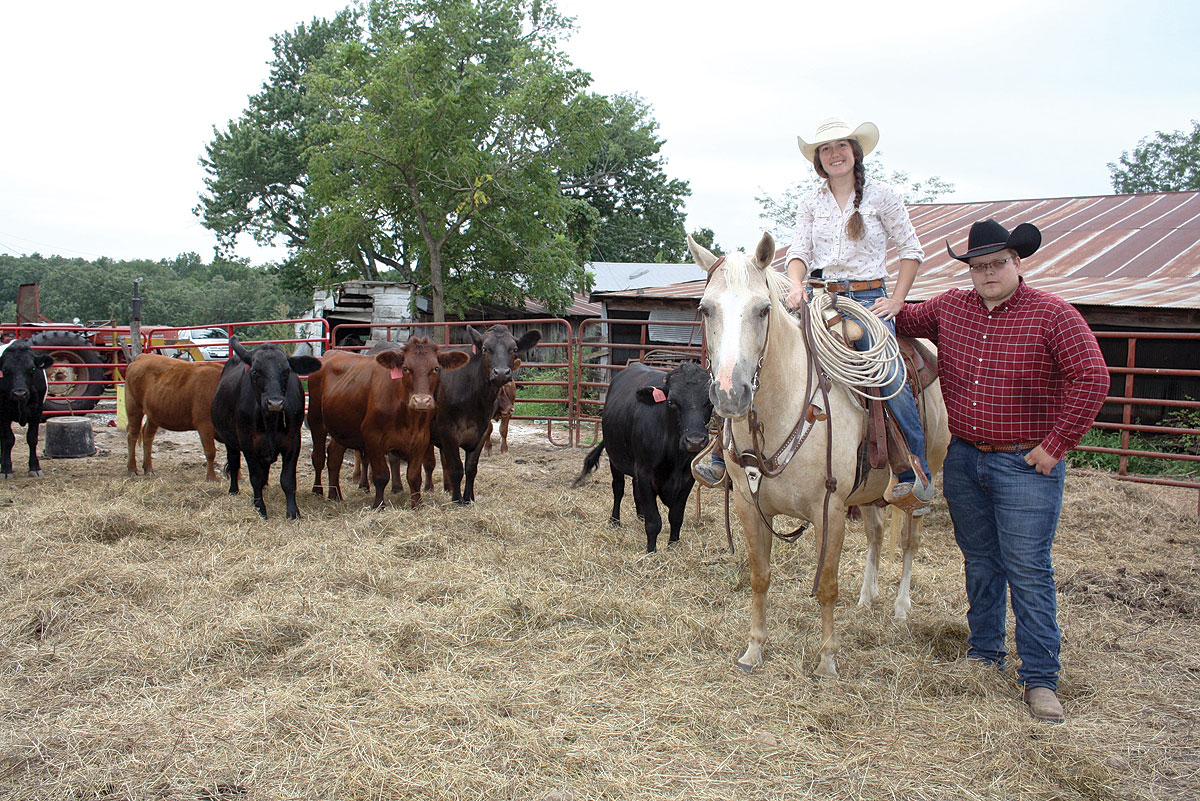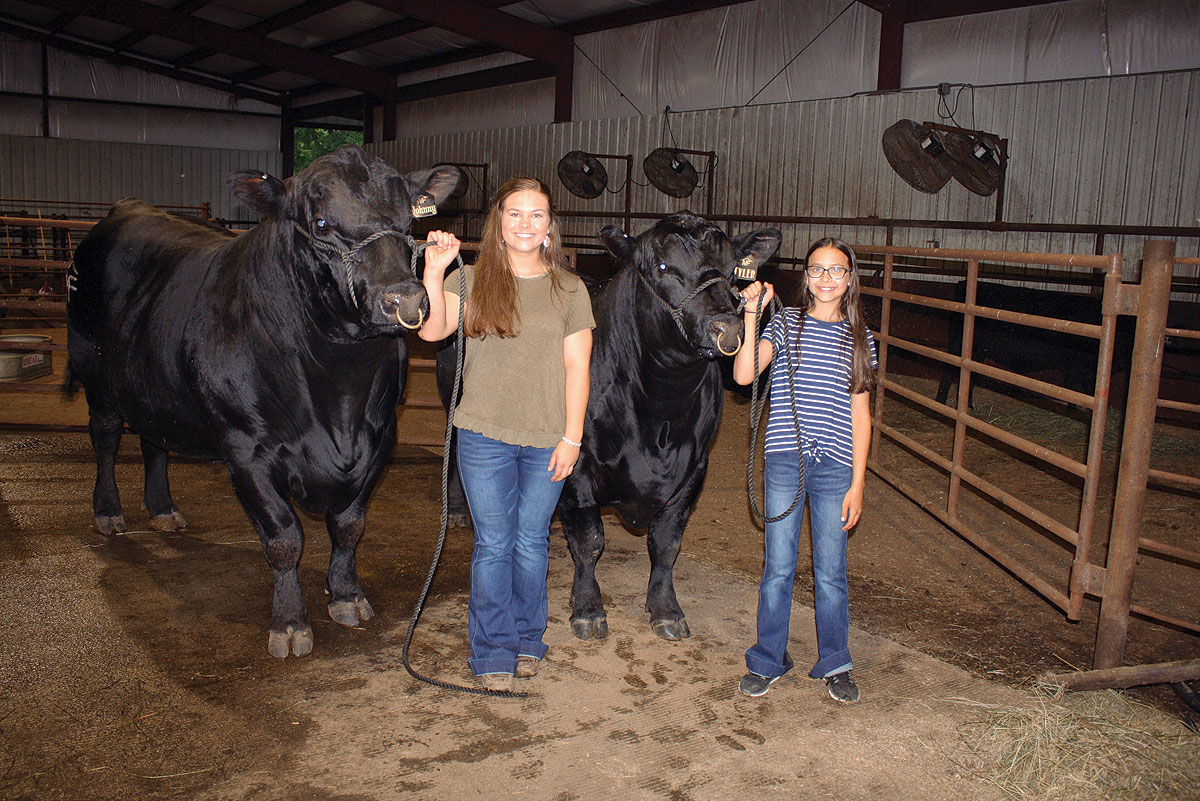
Matt and Tabitha Van Black plan to expand their cattle, beef and equine operations
Matt Van Black has a plan for his future, a plan that includes more cattle, serving more customers and many years to come with his new bride Tabitha.
Matt grew up on his family’s farm near Bolivar, Mo., and was able to purchase his farm and cattle in October 2018, which gave birth to the VB Ranch. The farm adjoins his parents’ property and gives him about 240 acres to operate within.
“After my dad was promoted in the military, we came here and bought 40 acres when I was about 8 years old,” Matt recalled. “The man who had this farm was an older gentleman, so we helped him out a lot and were able to buy it from him, which has helped us expand.”
The Van Blacks market finished steers to customers, selling wholes, halves and quarters.
“I started with some bottle calves, then started looking at producing beef for people,” Matt said. “I always enjoyed farm-raised beef, so why not offer it to others?”
Matt has marketed about 12 finished steers annually, but he now plans to have at least five animals ready for processing every 45 days.
“I want to have 40 calves in the first year with this new plan, then double that the next year,” Matt explained.
VB Ranch is also cow/calf operation with about 22 momma cows. The calf crop will not supply his farm-raised beef operation isn’t possible, so he works with other producers to purchase calves, which are finished in a combination grass and grain program.
“It actually helps other small farmers out and we can consistently have beef,” Matt said. “A lot of farmers around here only have 15, 20 acres so if they can raise a couple of calves that helps me out, and I can help them out by buying those calves.”
Steers are typically processed at no less than 1,100 to 1,200 pounds.
Steers in the beef program are fed a commercial ration several times week, until the last 45 days of finishing when they are offered grain twice a day, plus grass or hay.
“They get a mixture of oats, corn, a sweet feed and other things that will help with marbling and taste of the meat,” Matt said, adding that if a customer requests grass-finished beef, those animals are separated into a different pasture.
The majority of the cowherd and the steers are commercial black and Red Angus or Angus influenced, but if a customer wants something different, the Van Blacks will accommodate the request.
“We’ve got a Belted Galloway right now,” Matt said. “It’s kind of an experiment. We’ve got someone who wants half and we’re going to keep a quarter and see how we like it. We run black Angus bulls with our black and red cows, and the calves that we buy are straight Angus. We’re sticking with the Angus right now because that’s what we have. We’re also looking at implementing a Gelbvieh bull because of the muscling and the taste.”
Bulls used at the VB Ranch are rented, which allows for genetic diversity and flexibility.
With the demand of individual cuts growing, Matt and Tabitha hope to remodel an old dairy barn on their farm and begin an on-the-farm store, selling bundles and individual cuts of beef.
“I have people who want the fresh beef, but don’t need a large amount,” Matt explained. “Sometimes folks just want a couple of roasts and some hamburger now and again.”
Cattle graze in a rotational system, with only a small amount of feed offered.
“When they are bred, we only give grain once a week so that we don’t get really big calves,” Matt said. “They have fresh grass and water, and in the wintertime, they have good quality hay at all times. This year we’ve been fortunate because we still have grass growing. We stockpile some fields for the wintertime.”
Matt credits his attendance of a USDA Grazing School for helping him to improve forages on his farm.
“We’ve done a lot of reclaiming of fields that were taken over by trees, reseeded and fertilized. I’m looking at taking one field and seeding a warm-season grass so that if there is a year where we have a drought, we will have that. Right now, we have fescue, clover and a decent stand of Orchardgrass that I’m very happy with, so I want to keep all of that,” Matt said.
They are also able to produce all of their own hay.
In addition to growing their beef market, the Van Blacks have plans to expand their cowherd, which are primarily fall calvers, with at least 12 to 15 additional females this fall, then add 24 to 30 more next year, depending on rental pasture availability.
Matt is a Polk County Sheriff’s Office Deputy, working varied shifts.
“That makes Tabitha the main farmhand right now,” Matt said.
“I like to call myself the foreman,” Tabitha said with a smile.
Working with cattle is new for the Billings, Mo., native, but Tabitha began riding colts when she was about 10 years old, then training for the public at 18.
Tabatha plans to expand her training program to include ranch horses that can be used to work cattle in a low-stress manner, offer riding lessons to all ages, as well as trail rides and clinics to the public.
“I have a decent number of people who want to bring their kids, but I don’t want it to be just about kids,” Tabitha said. “I want to focus on horsemanship.”
In addition to their bovine and equine ventures, Matt and Tabitha feel it is essential to educate consumers about agriculture, and they enjoy answering questions.
“We explain that yes we do give our cattle shots, but just the bare minimum to keep them healthy, we give them grain, and we give them grass; they are well taken care of,” Matt said. “They are very, very happy cows. We would also like to work up to having brandings so that people can come out and see what ranchers. We want to open some eyes to where food comes from and what ranchers do to get that food. We also want to allow people to come out and work on the farm to get a taste of the hard work that farmers do.”






